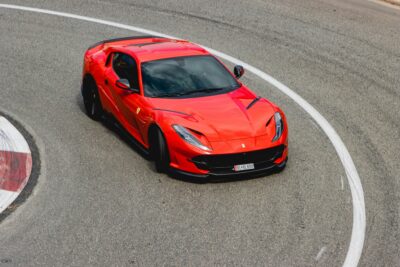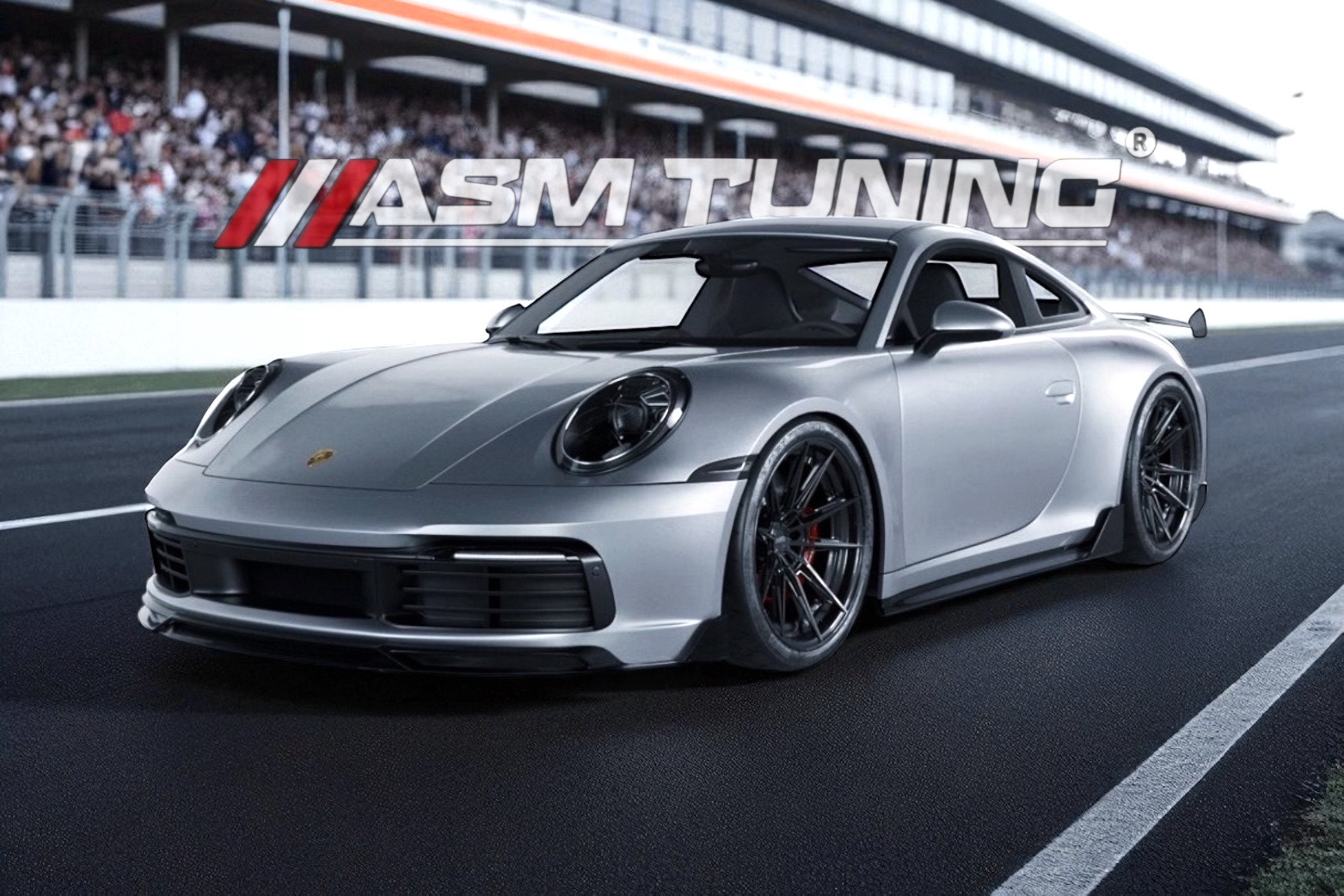Introduction
Track-day drivers are always looking for ways to cut lap times, improve handling, and stand out from the crowd. The right aerodynamic upgrades can make a huge difference, but the material you choose is just as important as the design — especially when it comes to carbon mods that add real performance.
Carbon‑fibre has become the go‑to material for performance enthusiasts because it is light, strong and can be moulded into shapes that deliver real aerodynamic benefits. Compared with ABS or fiberglass, carbon‑fibre car parts typically reduce weight while maintaining exceptional strength, and the precision of carbon‑fibre manufacturing allows engineers to create sleek, drag‑reducing profiles.
This article explores the best carbon‑fibre aerodynamic mods for track‑day enthusiasts, with research‑backed reasons why each upgrade improves performance.
Why carbon‑fibre is ideal for track‑day aero upgrades

Lightweight construction
What is carbon fibre? Its most celebrated advantage is an incredibly low weight relative to its strength. Upgrading to carbon-fibre components lowers overall vehicle mass, leading to better acceleration and sharper handling. The reduced unsprung weight also allows the suspension to keep tyres planted on the track, improving grip during high-speed cornering.
Even small weight reductions can make a significant difference in lap times, which is why serious track drivers see carbon‑fibre as a performance necessity rather than a styling upgrade.
Improved aerodynamics
Aerodynamic efficiency is critical on a circuit. Carbon‑fibre parts are typically designed with smooth, streamlined shapes that reduce drag and allow air to flow more effectively over the car.
Complex contours that would be difficult to achieve in metals are easily formed with carbon‑fibre, enabling designers to integrate splitters, diffusers and canards that optimise airflow and increase downforce. Improved aerodynamics not only increase top‑end speed but also enhance stability and cornering grip—qualities that shave tenths of a second off lap times.
Heat resistance and durability
Track driving generates extreme heat, particularly around the engine, exhaust, and brakes. Carbon-fibre components offer excellent heat resistance, maintaining their structural integrity in high-temperature areas such as hoods and diffusers.
Their superior strength-to-weight ratio means they remain durable under stress, making them ideal for repeated track sessions without degrading — another reason why carbon fibre is the future of lightweight builds.
Modern styling and resale value
While performance gains are paramount, carbon-fibre’s distinctive woven pattern and high-gloss finish also deliver a premium look that appeals to track-day enthusiasts. A well-executed carbon-fibre build can boost resale value with the right mods, enhancing desirability and turning heads in both paddocks and parking lots.
Top carbon‑fibre aero mods for track‑day cars

1. Front splitters and canards
A carbon-fibre front splitter extends horizontally from the front bumper, creating a sharp edge that forces air over the car rather than underneath. This increases front-end downforce and reduces lift at high speed. Because carbon-fibre splitters are lightweight and stiff, they do not flex like plastic alternatives, ensuring consistent downforce across the lap — as explained in our front splitter science guide.
Many splitter kits also include small vertical fins known as canards or dive planes. These attach to the front bumper and help generate additional downforce while directing air away from the front wheels, reducing turbulence and improving steering response.
-
Performance benefits: More front‑end grip means you can brake later and turn in faster. A high‑quality carbon‑fibre splitter can reduce drag and improve fuel efficiency, while the added downforce helps maintain stability during high‑speed braking and cornering.
-
Installation tips: Always choose a splitter designed for your vehicle’s bumper shape. Ensure the mounting hardware is robust because splitters experience significant aerodynamic loads. Proper alignment is essential; even a slight upward angle can increase lift rather than downforce.
-
ASM Tuning recommendation: ASM Tuning offers bespoke carbon‑fibre splitters and canards tailored to popular track cars. Our designs optimise downforce without adding unnecessary drag.
2. Side skirts and aero blades
Side skirts run along the lower edge of a car’s body, sealing the gap between the chassis and the road. This prevents high-pressure air from flowing under the car, which can cause lift. Carbon-fibre side skirts are especially effective because they are rigid and light — a key reason why carbon-fibre side skirts improve aero balance.
Aero blades, sometimes called vortex generators, can be added near the rear of the side skirt to stabilise airflow around the rear wheels and reduce drag.
-
Performance benefits: Reduced under‑body airflow lowers lift, allowing the suspension to work more effectively. Consistent airflow along the sides also reduces drag. These improvements translate into higher speeds on straights and better stability in fast corners.
-
Styling: Side skirts make the car appear lower and more purposeful. Carbon‑fibre’s woven finish complements other carbon‑fibre body panels.
-
ASM Tuning recommendation: ASM Tuning produces side skirts in traditional woven carbon and forged carbon finishes. Our kits integrate seamlessly with factory mounting points, making installation straightforward.
3. Rear diffusers
A diffuser manages how air exits from under the car. It expands the airflow in a controlled way, reducing pressure under the car and creating suction (downforce).
Carbon-fibre diffusers can be moulded with deep channels and fins to maximise pressure drop. According to composites experts, carbon-fibre components allow intricate shapes that enhance aerodynamic performance — a highlight of our rear diffuser design trends.
-
Performance benefits: By accelerating airflow under the car and expanding it at the rear, diffusers reduce turbulence and increase rear‑end grip. This helps reduce oversteer during high‑speed cornering and enhances stability when braking hard. Some diffusers integrate fins that also act as under‑body braces, improving chassis rigidity.
-
Installation tips: Fit the diffuser flush with the rear bumper to avoid creating drag‑inducing gaps. Choose a design that complements your front splitter—balance between front and rear downforce is vital.
-
ASM Tuning recommendation: ASM’s carbon‑fibre diffusers are designed in conjunction with our splitters to provide balanced aero packages. We offer track‑day and street‑friendly configurations.
4. Rear wings and spoilers
A properly designed rear wing is perhaps the most recognisable track upgrade. Carbon-fibre construction allows large wings that remain lightweight yet stiff. Adjustable wing elements let drivers fine-tune the angle of attack for different tracks and conditions.
While wings produce downforce, spoilers (smaller lips at the trunk edge) smooth airflow and reduce drag — making it essential to know how to choose the right spoiler for your car.
-
Performance benefits: Rear wings increase downforce on the rear axle, improving traction when accelerating out of corners. Adjustable wings let you strike a balance between grip and straight‑line speed.
-
Material advantage: Carbon‑fibre wings resist torsional flex at high loads, maintaining their aerodynamic profile even at high speeds. The low weight minimises additional rear‑end mass, preserving handling balance.
-
ASM Tuning recommendation: ASM offers carbon‑fibre wings with adjustable mounts and endplates for track‑oriented setups. For street‑driven cars, we supply carbon‑fibre spoilers that add style and modest downforce without the need for chassis reinforcement.
5. Carbon‑fibre hoods and roof panels
Replacing the factory hood with a carbon-fibre version dramatically reduces weight over the front axle. Less weight means the car turns in more quickly and reduces stress on the suspension. Many aftermarket hoods incorporate venting to extract hot air from the engine bay — further proving the advantages of carbon fiber vs aluminum hoods.
Carbon‑fibre’s high heat resistance makes it ideal for these applications. Similarly, carbon‑fibre roof panels lower the car’s centre of gravity, improving chassis balance.
-
Performance benefits: Weight saved over the front end improves turn‑in and braking. Venting enhances engine cooling. A lowered centre of gravity reduces body roll, making transitions smoother.
-
Styling and fitment: A carbon‑fibre hood with exposed weave is an eye‑catching statement. Some track regulations allow bonnet pins; always ensure safety latches are secure since carbon‑fibre hoods can be lighter than stock latches expect.
-
ASM Tuning recommendation: Our carbon‑fibre hoods are engineered with integrated vents and reinforced latch points. Roof panels are offered for popular track cars, enabling serious weight savings.
6. Front fenders and wide‑body kits
For drivers who need extra tyre clearance or want to improve high-speed stability, wide-body kits replace the front fenders with flared, lightweight carbon-fibre panels. These allow wider wheels and tyres, increasing the contact patch for better grip. A full wide-body conversion often includes extended rear arches and coordinated aero elements — a showcase of what makes a good aero kit.
-
Performance benefits: Wider track width improves lateral grip, while carbon‑fibre keeps added weight to a minimum. Additional venting in the fenders can relieve air pressure build‑up in the wheel wells, reducing drag and lift.
-
Trends: The aftermarket is embracing high‑tech materials such as carbon fibre and even 3D‑printed components, and wide‑body kits made from carbon‑fibre are at the forefront of that trend.
-
ASM Tuning recommendation: ASM Tuning supplies modular carbon‑fibre wide‑body kits with precise fitment. Our kits include optional aero blades to help channel air around wider wheel arches.
7. Carbon‑fibre undertray and flat floors
A flat undertray smooths airflow under the car, reducing drag and working with other aero pieces to create downforce. Carbon‑fibre’s strength allows the undertray to be thin and light while still durable enough to withstand track debris. Integrating venturi tunnels into a carbon‑fibre undertray further accelerates airflow and enhances suction.
-
Performance benefits: Reduced drag and increased under‑body downforce lead to higher cornering speeds. The car feels more stable and planted at high speeds, especially through fast bends.
-
Installation tips: Flat floors often require professional installation because they must be sealed properly and might necessitate relocating components such as exhaust hangers. Combine with front splitters and diffusers for the best effect.
-
ASM Tuning recommendation: Our track‑spec undertrays are custom‑built for specific models, ensuring optimum fit and integrating seamlessly with other ASM aero parts.
8. Carbon‑fibre mirrors and small aero components
Sometimes small parts deliver meaningful benefits. Carbon‑fibre mirror caps or replacements reduce weight high on the vehicle and can be shaped to cut drag. A‑pillar vortex generators and roof spoilers optimise airflow to the rear wing or spoiler. Even tow hook covers and fuel caps crafted from carbon‑fibre contribute to weight reduction and add finishing touches to a build.
-
Performance benefits: While the gains from each component are small, together they contribute to a lighter, more aerodynamically efficient vehicle. Carbon‑fibre’s ability to be formed into intricate shapes allows each part to be optimised for airflow.
-
ASM Tuning recommendation: ASM offers a full range of carbon‑fibre accessories to complement major aero mods, ensuring a cohesive look and incremental weight savings.
9. Carbon‑fibre wheels (bonus: unsprung‑weight reduction)
Although this article focuses on aero parts, carbon-fibre wheels deserve a mention because they combine weight reduction and aerodynamic benefits. Carbon-fibre wheels reduce unsprung weight and rotational inertia, delivering faster acceleration, improved braking, and sharper handling — all reasons why ASM Forged Wheels are worth the investment.
A lighter wheel also improves ride quality by allowing the suspension to respond more effectively to bumps. Carbon‑fibre wheels are trending in the aftermarket and complement carbon‑fibre aero kits aesthetically and mechanically.
-
Considerations: Carbon‑fibre wheels are premium products and may not suit every budget, but they deliver significant performance gains for track‑day drivers seeking every advantage.
-
ASM Tuning recommendation: ASM Tuning can supply lightweight forged wheels as a more affordable alternative, delivering similar unsprung‑weight benefits.
Choosing the right carbon‑fibre aero mods

Balance and integration
“Aero upgrades are most effective when they work together. A large rear wing without matching front downforce can cause oversteer. Conversely, a huge front splitter without sufficient rear grip will induce understeer.
Consider your car’s baseline balance and typical track characteristics when selecting parts — especially if you’re aiming for the best carbon fiber car mods to achieve true balance and performance.
ASM Tuning’s aero packages are designed as balanced sets, but we can customise combinations to suit specific driving styles.
Quality and fitment
Not all carbon-fibre parts are created equal. High-quality components use proper resin systems and curing processes to achieve the strength and weight benefits described above. Cheap imitations may be heavier than stock and prone to delamination.
Always purchase from reputable suppliers — ASM Tuning sources premium carbon-fibre and tests parts for strength and fitment, helping you avoid the real cost of cheap aero parts.
Legal and rule considerations
Some track-day events have rules regarding the size of aero devices, especially wings. Check the regulations for the circuits you frequent to ensure compliance. On public roads, certain mods (e.g., large splitters or canards that protrude beyond the bumper) may be illegal.
Balance your need for performance with practicality — and explore the best tuning upgrades that still keep your warranty safe before making changes.
Cost vs. benefit
Carbon‑fibre aero parts deliver real performance benefits but can be costly. Prioritise parts that address weaknesses in your car’s current setup. For example, if you struggle with front‑end grip, start with a splitter and canards. If stability at high speed is an issue, a diffuser and rear wing may offer more value.
Installation and maintenance

-
Professional installation: While some parts, like mirror caps, are simple bolt‑ons, others require professional fitting. Flat floors and wide‑body kits may involve cutting and drilling; incorrect installation can cause aerodynamic imbalance or structural issues.
-
Care and cleaning: Carbon‑fibre parts should be cleaned with non‑abrasive cloths and mild soap. Avoid harsh chemicals that can damage the clear coat. Regularly inspect mounting hardware; track vibrations can loosen bolts. Store your car indoors or use covers to protect exposed carbon‑fibre from UV damage.
-
Repairs: Minor scratches can sometimes be buffed out, but cracked or delaminated parts often need replacement. Because carbon‑fibre’s strength comes from its continuous fibres, structural damage cannot be easily repaired like metal.
Conclusion
Carbon-fibre aerodynamic modifications are among the most effective upgrades a track-day enthusiast can make. Whether it’s a front splitter that reduces lift or a wide-body kit that accommodates grippier tyres, carbon-fibre’s combination of lightness, strength, and shapeability delivers measurable performance gains — making now the perfect time to explore our tuning collection.
Studies show that reducing weight improves acceleration and handling, while streamlined designs cut drag and increase fuel efficiency. Carbon‑fibre’s heat resistance ensures durability in demanding track environments, and modern forging techniques are producing innovative looks and shorter production times.



